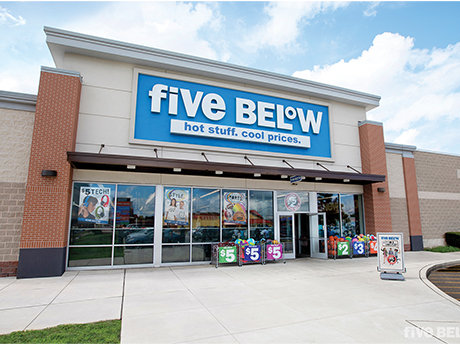Retail is not dead. In fact, coming out of COVID-19, retail is arguably the strongest that it’s been in many years. According to S&P Global Market Intelligence data, in 2022 we saw a 13-year low in retail companies filing for bankruptcy.
Here in Baltimore, we’re seeing extremely low vacancy rates and steady demand, which in turn, is cultivating a competitive environment. However, despite the challenges that retail has faced over the past several years, its resilience is where we continue to find plenty of reasons to be optimistic.
A look back
In March 2020, the phones stopped ringing and businesses shuttered for what was anticipated to be a few short weeks. We soon came to find that was not the case. Retail did struggle, significantly in some cases. Restaurants, service-based businesses, soft goods, fitness, entertainment and experiential concepts amongst many others, whether large corporate-owned or mom-and-pop users, struggled to stay afloat. And many did fail.

Space came back on the market and concepts dwindled at an uncanny pace. But the so-called “retail apocalypse” — a common phrase that was originally coined because of the increased popularity of e-commerce — was, again, proved to be hyperbole.
Retailers sought ways to enhance the consumer experience and overcome the new challenges that resulted from the pandemic. They pivoted and made changes that will likely remain for the long-term.
For example, we’ve seen more requests for dedicated curbside pickup parking spaces, higher demand for drive-thru (and stacking counts) and the need to accommodate more outdoor seating.
Furthermore, these changes and requests weren’t simply limited to restaurants, but also included large companies such as Walmart, Nordstrom and grocery stores. Each are continuing to improve upon and expand on their curbside, convenience-based pick-up, and some even offer delivery for free or at a small additional cost. These changes alone are helping drive more traffic to retail centers, all while making the consumer experience superior to that of the past.
Post-pandemic retail
Fast forward three years later and we’re seeing occupancy rates, retail rents and demand that we have not witnessed in many years. New concepts that previously weren’t in the market such as pOpshelf, existing staples that already exist here like Five Below and Floor & Décor, and even tenants there were once considered forgone like GNC all remain bullish on expansion.
Additionally, we are seeing e-commerce brands focus more heavily on the “clicks to bricks” strategy, and concepts that would traditionally only locate in enclosed malls, such as Bath & Body Works, Sephora, and American Eagle, all lease space in open-air shopping centers. These trends have helped mitigate the losses and shuttered spaces stemming from the pandemic.
Storm clouds ahead?
With the first quarter of 2023 already behind us, early indicators for the coming months and remainder of the year are raising red flags that we’re paying close attention to. We have already seen more major retailers file for bankruptcy in the first three months of 2023 alone compared to all of last year.
Rising construction costs and sustained lead times on important equipment have led to a lack of new construction. Coupled with rising rates and overall fears of where the economy is heading, many retailers and landlords are at a standstill.
However, rather than focus on the uncertainty, it’s important to acknowledge the progress and resiliency that we’ve witnessed, not just over the past three years, but over the past 10-plus.
From learning to adapt and co-exist with online retail, to not only making it through a global pandemic but coming out on the other side even stronger, retailers and landlords will continue to innovate and provide a service or experience that makes it worth coming back for.
— By Michael Ginsburg, Principal, KLNB. This column was originally published in the April 2023 issue of Southeast Real Estate Business.


